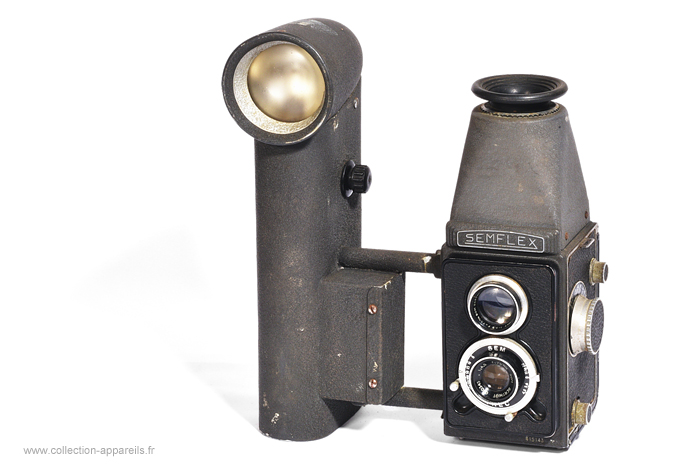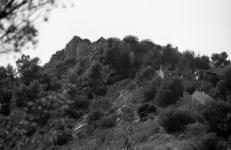|
Sem Semflash |

Manufactured or assembled in France from (Circa) 1960 to (Circa) 1960.
Index of rarity in France: Rare (among non-specialized garage sales)
Inventory number: 14743
See the complete technical specifications
Chronology of cameras Sem
The Semflex cameras were offered in three ranges: Oto, Semi-Oto, and Standard.
The Semflash cameras were special Standards because they were equipped with a built-in electronic flash, which was a world first. The cost of taking pictures was reduced by eliminating the need for "magnesium" bulbs and the associated supply hassles. The target clientele didn't include professional photographers or hobbyists but rather commercial representatives, real estate agents, and others who needed to illustrate their products without delving into technicalities. Particularly, local photographers benefited by renting or borrowing a Semflash, ensuring sales of film, development, and prints.
The equipment included the Semflash and a small transformer because at the time, power distribution was either 115 or 220 volts depending on the region. All this was packed in a small wooden case that could hold reserve 120 films, with the lid showing an illustrated user manual.
Initially separate, the transformer was quickly integrated into the Semflash, eliminating the risk of loss.
Once the camera was plugged into the power supply, loading the film, advancing it with a button, and viewing the photo number in the rear window posed no problem, even for a novice. Opening the lens cap and focusing on the ground glass was within everyone's reach. The trickiest part was identifying a number on the focus button corresponding to an index and transferring it to the aperture ring, ensuring correct exposure. Then, all that remained was to cock the shutter and release it.
But Paul Royer went even further in simplification: the focusing mechanism would directly adjust the aperture, the folding lens cap would be replaced by a viewing well with a large adjustable magnifying glass, protecting the ground glass from dust, and the shutter would not require pre-cocking. Designed for the Semflash, the magnifying cap was available in the catalog, along with the four small screws needed for installation. Therefore, it could be found on any Semflex camera.
This copy is a very rare version of the Semflash with the framed Semflex front. Therefore, it is a late production, but curiously, determining the correct aperture for exposure must be done based on the guide number and the focusing distance. These later models were intended for professionals or knowledgeable amateurs.
Lenses: "Som Berthiot 1:4,5 f=75 Q50345 - Anastigmat 1:3,3 F=75 mm Som Berthiot Paris N° A44779"

Interesting links or bibliography :
Add a link or element of bibliography, a picture taken with this camera, a picture of box or an ads about this camera
Your photos taken with the same camera:
Cameras from Ebay France (Sem) (Uploaded each 3 hours)








